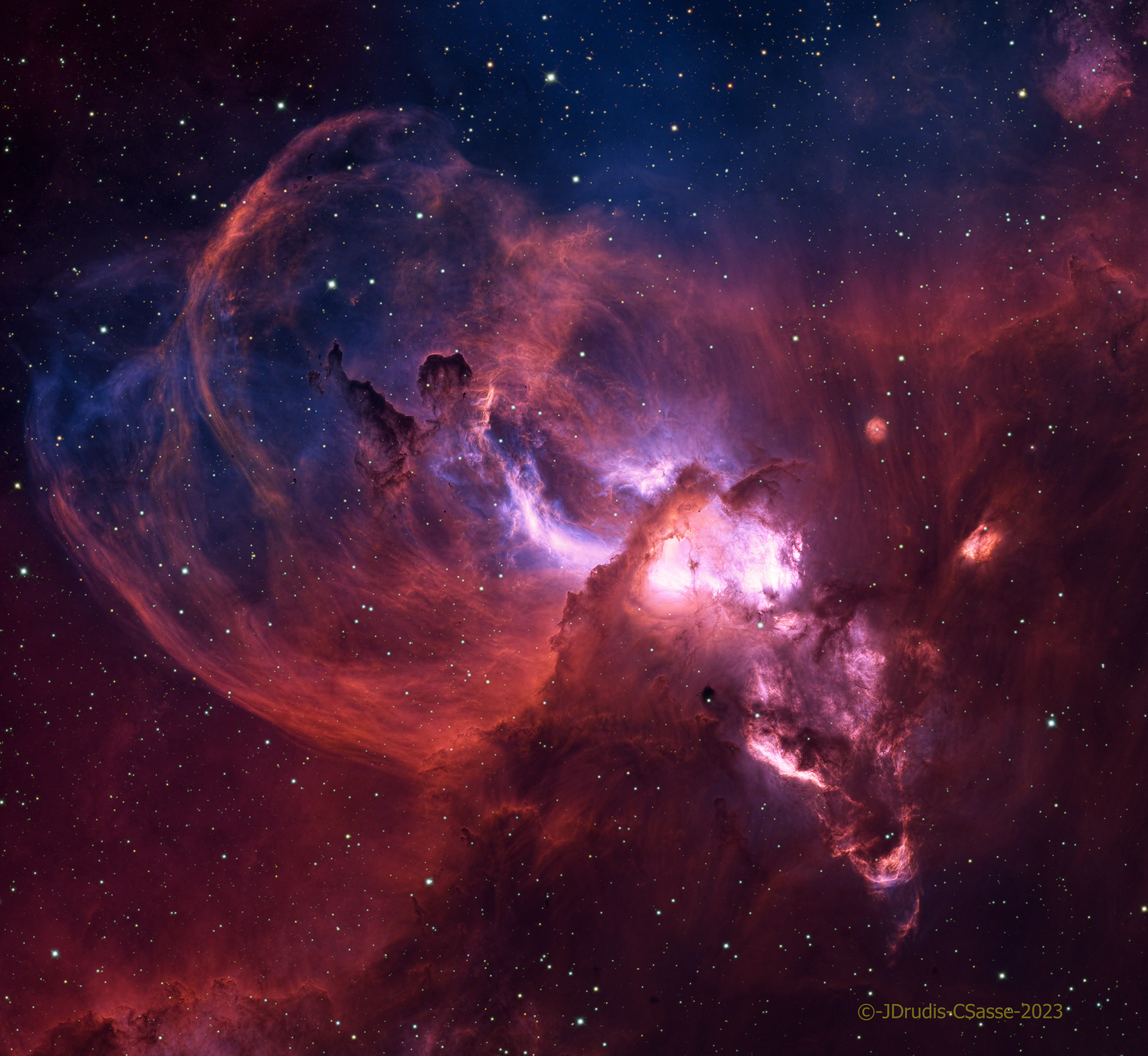Click on the image for a full resolution version
 See this image also on Instagram
See this image also on Instagram
NGC 3576 is usually shown in wider field images, also containing NGC 3603, the nebula located immediately left of NGC 3576. Both nebulas are completely unrelated, being NGC 3576 at an approximate distance of 9,800 light years, while NGC 3603 is more than twice that distance. This picture has been taken exclusively in narrowband (Halpha, OIII and SII, RGB having only been used to image the stars) and processed in a way as to reproduce the visible spectrum of this nebula. Its name was first used by Dr. Mazlin due to the shape of its central part.
NGC 3576 is a large emission nebula and an active star formation region, more than 100 light years across. Would it be at the Orion nebula distance (8 times closer), this nebula would span more than 4 degrees in the sky (eight times the full Moon). In this nebula can be found many Bok globules (seen as small dark nebulae, the Bok globules typically have a mass of about 50 solar masses and are the birthplace of many massive stars). NGC 3576 is part of the Carina nebula complex and it shows complex loops. According to the General Catalogue of Herbig-Haro Objects (Reipurth+, 1999), there are no Herbig-Haro objects in this nebula.
This image is yet another result of the ongoing joint project with Christian Sasse. A previous image of this nebula can be found here.
Additional Information
Object
Name(s): NGC 3576. The Statue of Liberty Nebula
Type: Emission Nebula
RA: 11h 12m 02s
Dec: -61º 13’ 46”
Constellation: Carina
Size (arcmin): 16×27
Magnitude: +9.1
Distance: 9,800 ly
Image
Date: 2023-02-27 to 2023-03-04
Location: Obstech, Río Hurtado, Chile
Size (arcmin): 27×25 arcmin
Telescope: 24” f/6.5 Reflector
Camera: QHY 461 (11760x8896pix)
Guiding: off-axis guider
Total exposure: 39h 40m (Ha: 13h 20m; OIII: 14h; SII: 9h 20m; RGB: 3h)
Processing: CCDStack, PixInsight (one process) and Photoshop CC 2023
